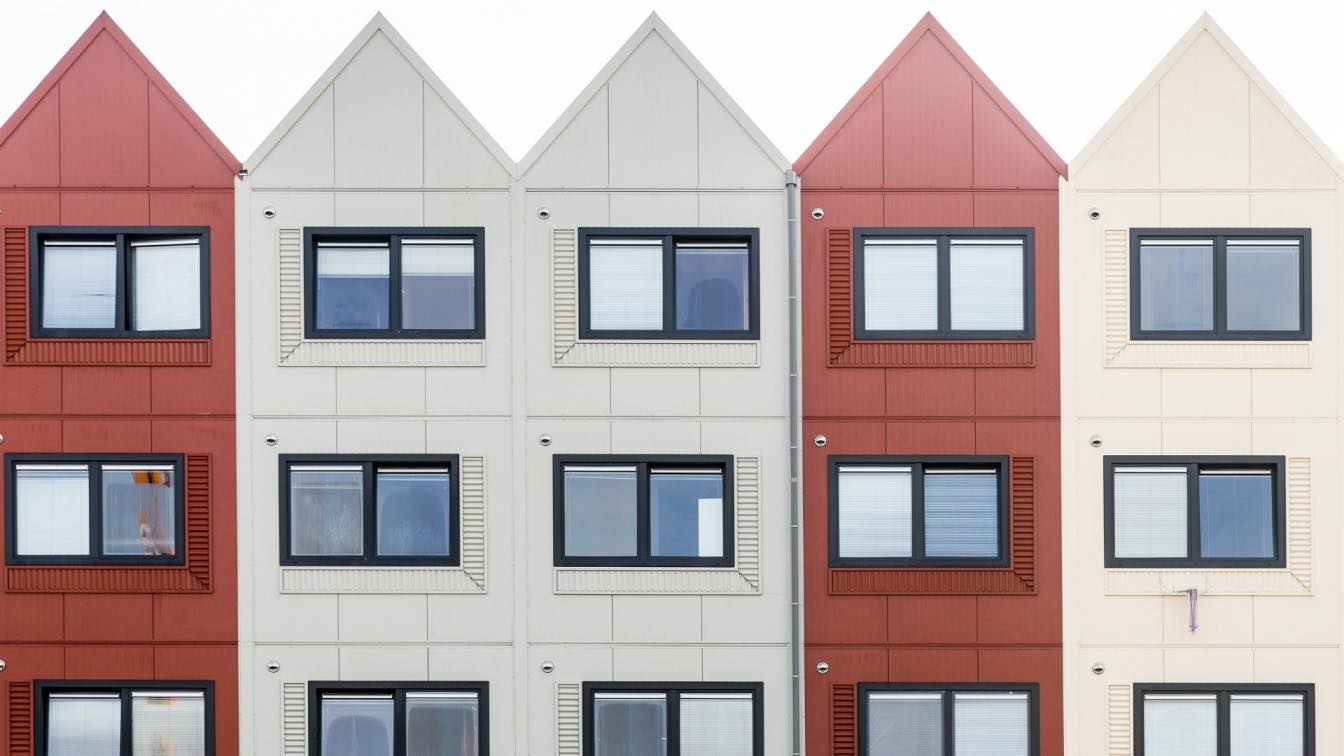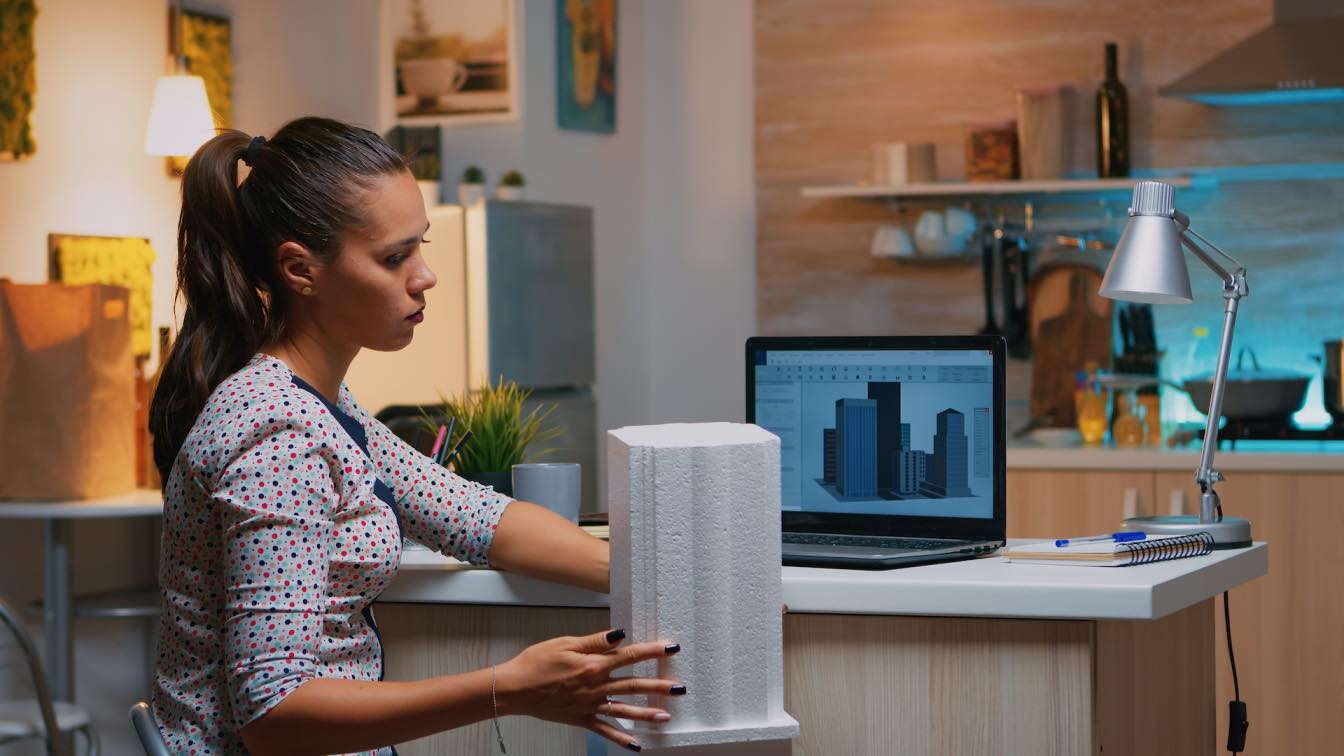Have you ever walked into a building or space that immediately transports you into a different world? Where every detail from the textures, colors, and lighting to the flow and feel of the environment just seems to resonate on a deeper level?
That's the power of blending architecture and artistry with premium painting. When done skillfully, these elements unite to create a synergistic sensory experience that engages the mind, body, and spirit in delightful ways.
In this article, we'll explore the myriad methods architects, designers, and painters have employed over time to fuse aesthetic excellence and deep meaning into the very foundations of our buildings and cities.
From ancient architectural wonders to contemporary public artworks, humankind has long sought to imbue structural necessities with artistic vision. When this alchemical marriage is successful, the results are often breathtaking—structures that elevate essential functions into meaningful places that nourish our shared culture.
So come along as we uncover some shining examples of how premium painting can infuse architecture with emotion, meaning, and lasting cultural impact. Who knows, you may just find some inspiration for bringing more artistry into your own surroundings!
Architectural Artistry Through the Ages
Long before the modern era, architects already recognized the power of incorporating painting and artistic embellishments into their structural designs. Just gaze upward at the vaulted ceilings of ancient Roman temples and you'll find stunning mosaics and frescoes transporting viewers into mythological realms.
Move ahead to the Middle Ages, and Gothic cathedrals dazzle with kaleidoscopic stained glass windows suffusing interiors with ethereal light. During the Renaissance, the period-defining masterworks of Michelangelo like the Sistine Chapel ceiling exemplified architecture and painting coalescing into majestic Gesamtkunstwerk—or "total works of art."
This synergistic tendency only accelerated through the late 19th and early 20th centuries. The whiplash curves and plant-inspired motifs of Art Nouveau architecture essentially demanded equally elaborate painterly decoration to create fully integrated total environments.
Later modernist and avant-garde styles like Futurism and Cubism extended this fusion of painting and architecture into more abstract yet still expressive realms. Buildings like Antoni Gaudí's undulating Casa Batlló or Frank Lloyd Wright's Fallingwater organically marry artistry and function.
Postmodernism further pushed the artistic envelope with playfully eclectic facades accentuated by colorful murals and textures. And contemporary landmarks from Sydney's scallop-shelled Opera House to Beijing's egg-domed National Centre for the Performing Arts demonstrate that the union of architecture and art continues to reach visionary new heights in the modern world. Blurring the boundaries between painting, sculpture, and edifice, these buildings uplift and inspire.
Interior Design Artistry
Just as exteriors benefit from artistic embellishment, interior spaces cry out for the imaginative application of premium painting. Beyond just covering walls, deliberate color choices and painterly techniques can profoundly impact an environment's mood and energy. A professional painting company like Bluenote Painting understands this better than anyone.
Consider the lobby of a lavish hotel enveloped in Mediterranean azure tones versus an office opting for crisp grays and whites—each paint job channels a very different ambiance. When designing for homes or businesses, don't underestimate the affective power of color and texture.
Rich jewel-toned accent walls or exposed brick surfaces immediately add depth and character. Murals or graphic wallpaper patterns can elicit smiles and conversations. And for truly bespoke artistry, commissioning painters to create one-of-a-kind installations provides limitless ways to express a space's unique identity.
Lighting interplays with painting as well. Imagine a restaurant where one wall features a bold abstract mural visible under the soft glow of recessed spotlights. Strategic illumination transforms the art from mere decoration into an immersive focal point.
Or picture an entryway where the diffuse gleam of metallic paint catches sunbeams streaming through an overhead skylight. Mindfully incorporating light and shadow adds life and visual interest.
Ultimately for interiors, a harmonious blending of premium paints, textures, lighting, and furnishings creates holistic living spaces that feel soothingly coherent. Each element enhances the others across multiple senses. And the right professional painters know how to actualize this vision while ensuring durable applications that will withstand everyday use.
Public Art Meets Architecture
Beyond interior realms, painting's creative synergies with architecture often generate profound public impacts. Artworks integrated with buildings and infrastructure can activate civic spaces, catalyze urban revitalization, and reinforce cultural identity.
Consider large-scale murals adorning exterior walls, parking garages, underpasses, and more across many modern cities. These monumental displays beautify neighborhoods, provide outlets for artistic expression, and foster community dialog.
In a similar vein, interactive light installations, water features, and sculptures strategically placed in public plazas, parks, and buildings offer engaging sights for passersby while softening hard edges.
When artistry enters the picture, sterile architectural necessities transform into welcoming human spaces. Thoughtfully planned public paintings and artworks work in harmony with their surroundings to create decentralized galleries, transforming the urban landscape into a collective canvas. Partnerships between cities, arts agencies, and professional painters allow for impactful community enrichment.
Ultimately, the most effective civic artworks are site-specific—custom-designed for a particular place and population. They celebrate regional stories, cultures, and hopes for the future. When art resonates with its context, it reinforces a profound sense of place. And painting's versatility allows for tremendous contextual adaptation.
A single building could display stained glass windows inspired by local flora on one side, a historical mural on another, and a children's playground scene around back. Such diversity promotes widespread engagement. Public artistry invigorates architecture.
Creative Expression Through Facades
A building's facade inherently represents the first stroke on a structural canvas awaiting artistic enhancement. The patterns, textures, and hues cloaking exteriors offer nearly limitless opportunities for creative expression.
When premium painters collaborate with architects and designers, almost any artistic vision can manifest through combinations of painting, mosaic, glasswork, metals, and innovative materials.
Some facades transform into living artworks through kinetic architecture and lighting designs. Prismatic glass tiles cascade like perpetual waterfalls. Embedded LEDs pulse with mesmerizing rhythms. Seasonal projector mapping literally paints surfaces with evolving imagery. Paired with sound, smell, and thermal effects, multi-sensory immersion becomes possible.
Where surrounding context permits, even more dramatic painterly facades extend into evocative rooftop flourishes. Sinuous metallic domes appear to defy gravity. Rooftop murals and sculptures tower overhead, adding color above eye-level sightlines. Building tops convert into dynamic canvases visible from afar.
Amid boundless potential, preservation concerns rightly temper some impulses toward unrestrained flamboyance. Maintaining connection with architectural heritage matters. Still, through respectful enhancements like mural restoration or complementary additions, contemporary artistry can harmonize with historic foundations rather than overwhelm them. With balance, facades act as bridges linking eras through a unified artistic vision.
Sustainability as Artistic Inspiration
Sustainable design and eco-conscious building principles have become inspiring springboards for ambitious works of painterly architecture. Recognizing art's power to promote planetary wellbeing, many leading architects and their painter collaborators now create expressive structures emulating nature's genius through form, function, and materials.
By studying organic systems, architects derive sculptural building shapes robustly adapted to local climates. Curving latticed sunshades, and ventilated facades passively regulate light and airflow like skin or leaves. Inside, living walls and biophilic principles bring vitality through pattern, texture, and life itself.
Renewable building materials also enable artistic innovation. Solar glass tile covers surfaces in iridescent displays. Recycled textile fibers color concrete in vibrant hues. Responsibly harvested woods exude inviting warmth. And 3D printing with reclaimed plastics permits curvaceous shapes fitting form to function.
Painting sustainably means utilizing zero-VOC options, energy-efficient LED lighting, and recyclable materials wherever possible. But eco-artistry transcends materiality through holistic visions of people and planets thriving in harmony. By valuing sustainability alongside aesthetics, creative minds are pioneering deeply meaningful and poetic architectural spaces.
The Artistic Process
Manifesting ambitious architectural artworks requires tireless creative passion coupled with technical savoir-faire at every stage. Though the process varies by project, several key elements enable artists and builders to translate imagination into reality.
First, close collaboration between leading architects, painters, sculptors, and other specialists pools together diverse talents and unified visions. Frequent conversations and brainstorming sessions encourage interdisciplinary pollination. Digital rendering and modeling tools allow teams to experiment and refine designs iteratively.
With the concept solidified, attention turns to pragmatic construction considerations. Working with engineers, builders map out required steps, materials, equipment, and timelines while estimating costs. At this point, designs likely evolve to meet budgetary and site-specific demands. Some artistic flourishes may get simplified, but core integrity perseveres.
Finally, skilled execution brings everything to life. Painters prepare surfaces, match colors, and apply layers with care and diligence. Artists oversee installation of their works. Completing every detail to meticulous specifications, the team collectively transforms vision into reality. And sustainable maintenance ensures the final product lives on for generations.
Throughout this intensive process, passion and attention to detail play pivotal roles. Creating architectural artistry requires immense focus, patience, and sensitivity to uncover the ideal fusion of form and function. But the results uplift our culture and our spirits.
Artistic Legacy
At their highest potential, architectural artworks endure as cultural treasures passing inspiration onward through generations. The greatest become iconic landmarks and must-see tourist attractions like Antoni Gaudí's ever-in-progress Sagrada Familia basilica in Barcelona. Or Renzo Piano's peculiarly precise skyscraper The Shard rising over London.
Such beloved landmarks often owe ongoing longevity to careful preservation and restoration efforts. Maintaining original artistic integrity over decades presents challenges as materials age and public tastes evolve. However painstaking, though, injecting new life into fading murals or corroding surfaces keeps artistic legacies alive.
In other cases, contemporary additions sensitively build upon existing foundations. See how the Louvre Pyramid's gleaming glass now seems at home amidst the palace's classical wings. Or witness the organically undulating Guggenheim Museum Bilbao sprouting unexpectedly yet fittingly from its historic riverside site. The impossible takes shape through creative vision.
Ultimately, architecture's capacity to carry meaning beyond the present day obliges practitioners to build thoughtfully and conscientiously. Designing for posterity means considering how our spaces will shape society over centuries. By suffusing this responsibility with artistic spirit, painters and architects co-author a future inspired by enduring values of truth, wonder, and beauty.
In Conclusion
We've toured across eras and continents to glimpse the phenomenal synergy generated when painters, architects, and passionate builders unite in pursuit of uplifting artistry. From ancient frescoes to kinetic facades, art-infused architecture through the ages proves humanity's abiding need for beauty woven into our foundations. The results elevate intrinsic functions into affecting experiences connecting mind, body and spirit.
Looking ahead, the field remains wide open for pioneering painters and visionary architects to advance new techniques, sustainable practices, contextual customization, and multisensory environments. The only limit is imagination. But whatever shape it takes, purposeful artistry will always bring spaces to life.
Our shared landscape thrives when essential structures also provide canvas for creative dreams. So next time you enter a thoughtfully adorned space, take a moment to appreciate the talented hands that translated artistic vision into our physical world. Their gifts echo through the ages whenever beauty calls us home.





